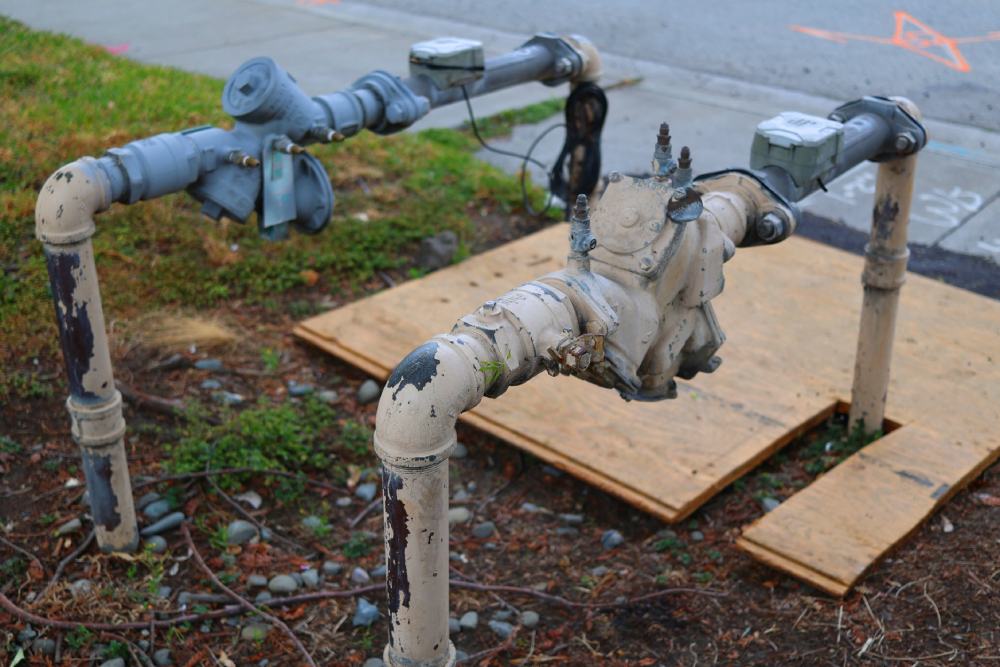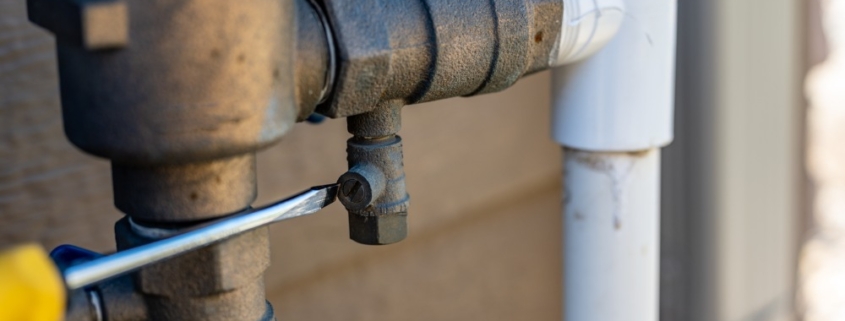TL;DR
Winterizing your backflow preventer protects plumbing, avoids costly repairs, and keeps irrigation systems safe. Simple steps now save stress later.
- Shut off the water
- Drain every valve fully
- Wrap the unit with insulation
- Prevent freezing damage
- Gain peace of mind all winter
When the first frost hits, your backflow preventer shouldn’t be the weak spot. Skip winter prep, and water can freeze inside, split pipes, or cause costly repairs. Even one missed step can disrupt service or damage your system.
Winterizing now saves time, stress, money, and trouble when spring returns. Here’s how to drain and protect your backflow device, plus how to winterize backflow valve parts before the cold arrives.
What Is a Backflow Preventer and Why Is It at Risk in Winter?
A backflow preventer is a safety device that keeps dirty water out of your clean supply. You’ll see it on irrigation systems, sprinklers, and other outdoor plumbing. Most sit where the outdoor line meets the main, often in the yard, garden, or just outside the house.
Because these devices sit outside, they’re exposed when the temperature drops. If water freezes inside, ice can crack valves, seals, or housings. That means leaks, costly repairs, or contamination, not to mention insurance headaches. The fix is simple: winterize backflow preventer parts before the cold sets in.
Tools and Supplies Needed to Winterize a Backflow Preventer
Arm yourself with the right gear before starting. Having everything ready makes the process easier, quicker, and safer.
What you’ll need:
- Adjustable wrench or pliers
- Standard screwdriver
- Towel or small bucket
- Pipe insulation or foam covers
- Weather-resistant insulation tape
- Plastic bag or weatherproof cover
- Compressed air (for systems with a blowout option)
- Thick gloves and safety goggles
Safety gear matters if you’re working with pressurized water or compressed air. Wear gloves to prevent cold burns and goggles to block spray.
Step-by-Step Guide: How to Winterize Backflow Preventer Systems
Follow these steps for how to drain backflow preventer systems and get them ready for the cold. Skipping one step can leave water trapped, so move carefully and double-check.
Shutting Off the Water Supply
- Find the shutoff valve inside your home or basement, just before the line heads outside to your backflow preventer.
- Turn the valve to “off.” If it’s stiff, use a wrench for grip.
- Confirm the water is off by lifting an outdoor faucet or test cock; no new water should flow.

Draining the Backflow Preventer
- Locate the test cocks on the backflow preventer body.
- Place a bucket or towel under each valve to catch leftover water.
- Slowly open each test cock or backflow valve with a screwdriver, letting water drain out fully. A soft hiss or trickle of water means it’s working.
- If your system has drain plugs or valves, open them in sequence to clear trapped water.
- Use compressed air on low, if available, to blow out the last drops through the blowout port. Avoid high pressure, which can damage seals.
Insulating and Protecting the Unit
- Wrap the device in foam pipe insulation.
- Secure with weatherproof tape so it won’t slip in wet or windy weather.
- Cover the setup with a plastic bag or insulated backflow preventer cover.
- Make sure no parts are exposed. Gaps let ice sneak in.
Can a Backflow Preventer Freeze If Properly Winterized?
Can a backflow preventer freeze if properly winterized? When drained and wrapped, it rarely does. The real risk is trapped water or exposed parts. Miss a test cock or use thin or loose insulation and freezing becomes more likely.
Best practices:
- Drain every valve, port, and test cock fully.
- Use thick, weatherproof insulation, not just a towel.
- Check insulation after storms to make sure it stays sealed.
Common mistakes include missing a drain plug, closing test cocks too early, or using poor-quality covers.
When to Call a Professional for Winterizing Help
Sometimes a setup’s location or design makes the task tricky. If your backflow preventer is buried, behind landscaping, or tied to complex plumbing, call a pro.
Signs you might need help:
- Can’t locate all valves
- Difficulty shutting off water or draining system
- Unclear on steps due to unique piping
- Previous winter damage
A licensed professional can drain, wrap, or show you how to remove backflow preventer systems. Services often include a full inspection, spotting leaks or wear before they become emergencies.
Keep Your Backflow Preventer Safe This Winter
Winterizing your backflow preventer keeps your plumbing safe. To do it correctly, shut off the water, drain every valve, and wrap the unit well. Taking these steps helps you avoid repairs and stress later. With your device protected, you can relax when the freezing winds arrive.
Want expert help? Learn more about our backflow installation and inspection repair services here.







Leave a Reply
Want to join the discussion?Feel free to contribute!